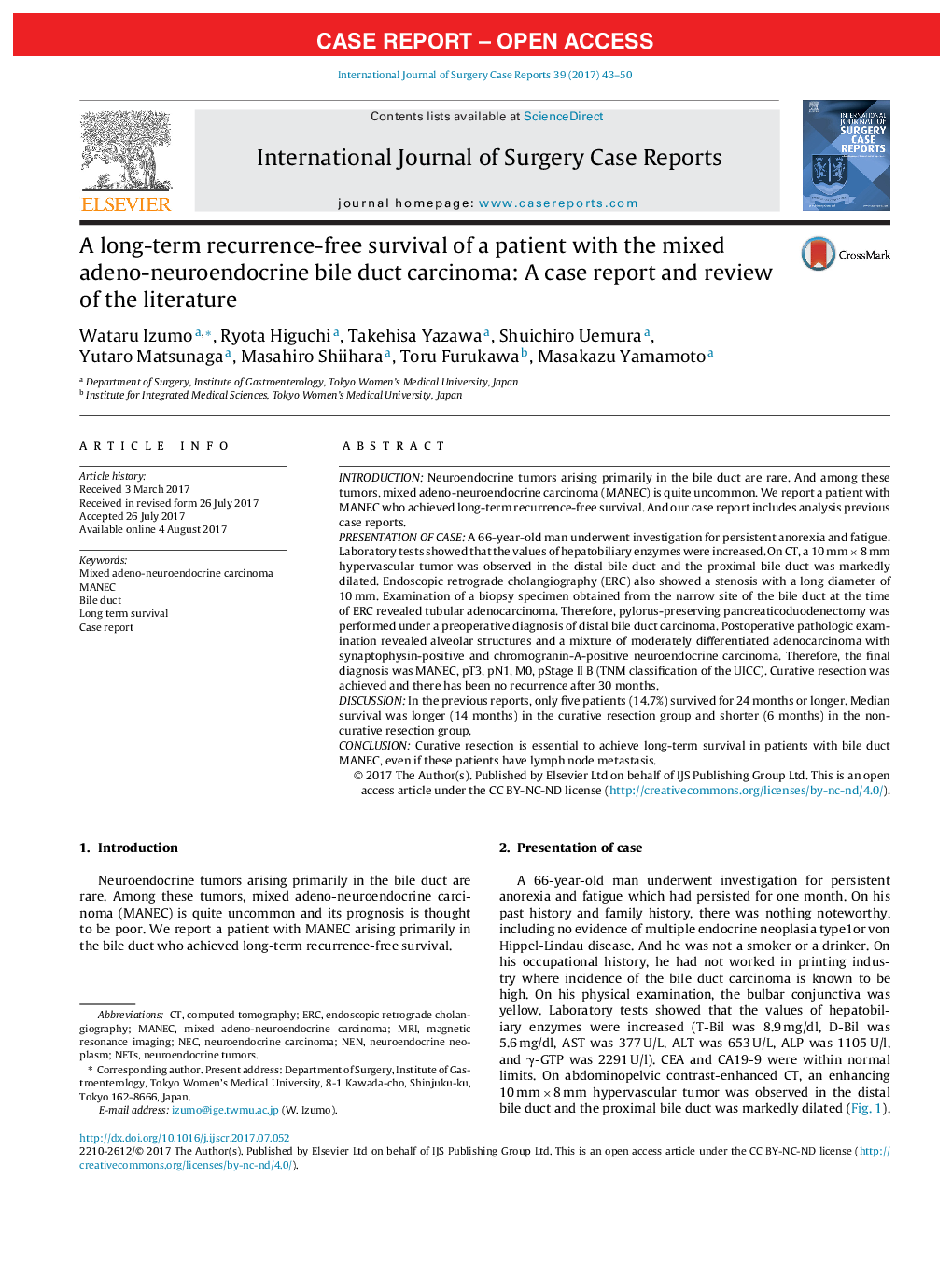| Article ID | Journal | Published Year | Pages | File Type |
|---|---|---|---|---|
| 5732736 | International Journal of Surgery Case Reports | 2017 | 8 Pages |
â¢Mixed adeno-neuroendocrine carcinoma arising primarily in the bile duct is very rare neoplasm.â¢The patient with mixed adeno-neuroendocrine carcinoma in the bile duct indicates a poor prognosis.â¢On imaging studies, a hypervascular tumor is suspicious of mixed adeno-neuroendocrine carcinoma.â¢Curative resection is the only way to obtain the long-term prognosis, even if these patients have lymph node metastasis.
IntroductionNeuroendocrine tumors arising primarily in the bile duct are rare. And among these tumors, mixed adeno-neuroendocrine carcinoma (MANEC) is quite uncommon. We report a patient with MANEC who achieved long-term recurrence-free survival. And our case report includes analysis previous case reports.Presentation of caseA 66-year-old man underwent investigation for persistent anorexia and fatigue. Laboratory tests showed that the values of hepatobiliary enzymes were increased. On CT, a 10 mm Ã 8 mm hypervascular tumor was observed in the distal bile duct and the proximal bile duct was markedly dilated. Endoscopic retrograde cholangiography (ERC) also showed a stenosis with a long diameter of 10 mm. Examination of a biopsy specimen obtained from the narrow site of the bile duct at the time of ERC revealed tubular adenocarcinoma. Therefore, pylorus-preserving pancreaticoduodenectomy was performed under a preoperative diagnosis of distal bile duct carcinoma. Postoperative pathologic examination revealed alveolar structures and a mixture of moderately differentiated adenocarcinoma with synaptophysin-positive and chromogranin-A-positive neuroendocrine carcinoma. Therefore, the final diagnosis was MANEC, pT3, pN1, M0, pStage II B (TNM classification of the UICC). Curative resection was achieved and there has been no recurrence after 30 months.DiscussionIn the previous reports, only five patients (14.7%) survived for 24 months or longer. Median survival was longer (14 months) in the curative resection group and shorter (6 months) in the non-curative resection group.ConclusionCurative resection is essential to achieve long-term survival in patients with bile duct MANEC, even if these patients have lymph node metastasis.
